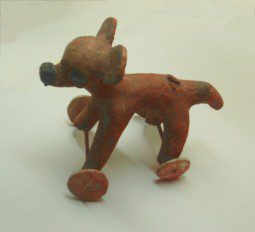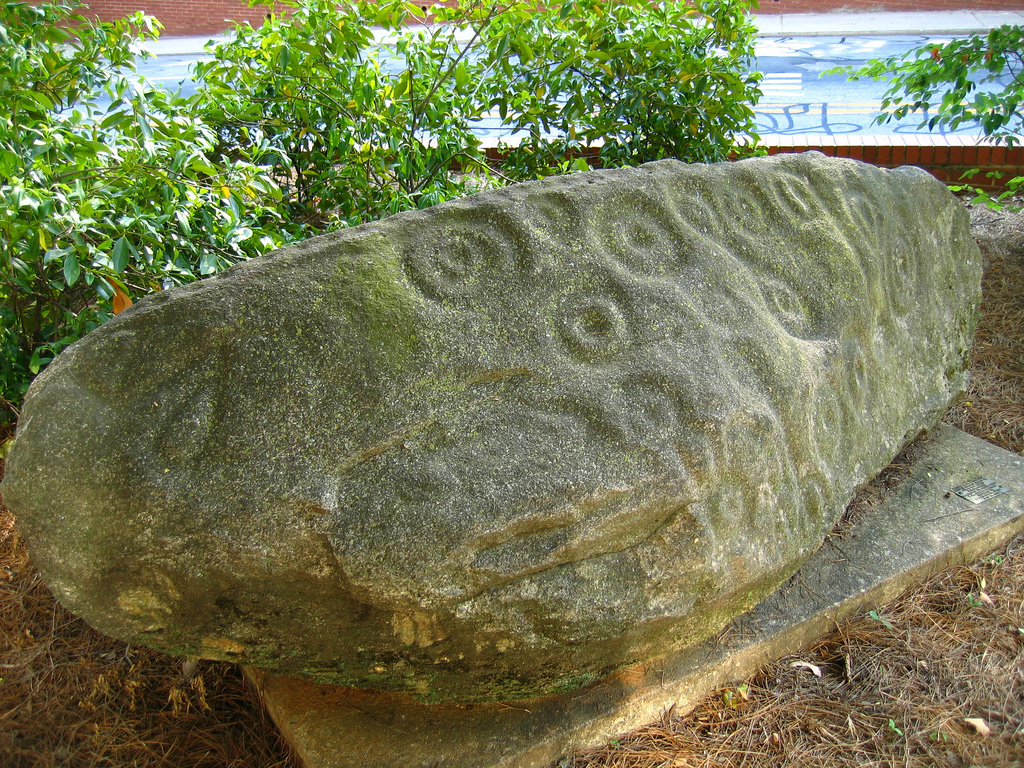Ancient Chihuahuas in Southeastern U.S.?
Origins and History of Chihuahuas in Mexico
The earliest evidence for the presence of Chihuahuas in Mexico comes from wheeled “toys” found throughout Mesoamerica that appear to depict both Deer Head and Apple Head Chihuahuas. The earliest example dates to 100-200 A.D. and clearly represents the Apple Head Chihuahua and was found at the Tres Zapotes site in Veracruz, Mexico. The dog is shown wearing an elaborate headdress.13

- Wheeled toy representing “apple head” Chihuahua from Tres Zapotes, Veracruz dated ca. 100-200 AD.

- Wheeled toy representing Chihuahua (Courtesy Wikipedia)
Another “toy” representation of a Chihuahua was also found in Veracruz this time dating to between 600-800 AD. This version was created in the Remojadas style. This figure is referred to as a deer or dog effigy but is most likely a representation of a Chihuahua. (The presence of what appears to be canine teeth in the available photos further supports the dog interpretation since most deer do not have canines.) It is currently in the collection of the American Museum of Natural History.14
More such wheeled dog toys were unearthed in Coumatlan, Michoacan on the southeast shore of Lake Chapala,15 The toys were found in fragments with several dog heads among the remains. The upturned snout of one of dog heads is suggestive of the Chihuahua breed as seen in earlier examples. No date was given for the time period in which it was manufactured.
- Fragments of wheeled toys representing dogs. Figure E’s upturned snout is consistent with the Chihuahua breed and several dog pots in Georgia.
Other examples can be found in El Salvador and Panama showing the widespread distribution of these wheeled dog effigies. According to Ekhom’s “Wheeled Toys from Mexico” : “The available examples of wheeled toys indicate a fairly extensive distribution of the trait both in space and in time.”16 Whether the Chihuahua was as widely distributed as the toys is unknown but it’s ancestor, the Techichi, certainly shared a wide distribution area. According to the Southern California Academy of Sciences:
“Techichi remains have been identified from sites in the southwestern United States, the Yucatan area of Mexico, and northwestern South America (Allen 1920). This variety of dog was encountered by early explorers and others who reported seeing small dogs of fox-like appearance. They were light-limbed, of rather slender proportions, with narrow delicate heads, fine muzzles, erect ears, and well developed tails, which may have been close-haired. Colors were reported as black, black and white, and brownish. The widespread temporal and geographic range of the Techichi testifies to its popularity as a companion or food item of pre-Columbian Indians.” 17
Thus it is likely the Chihuahua was equally well represented across Central and South America. (Continues…)




Pingback: Looking Back in Time; Pre-Columbian Dog Breeds! | Daycare & Grooming Blog